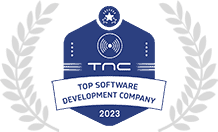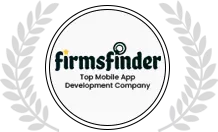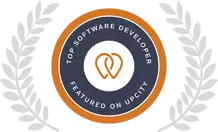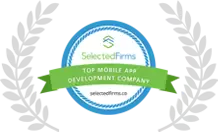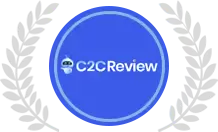Flutter is Google’s open-source UI toolkit that allows developers to build natively compiled applications for mobile, web, and desktop from a single codebase.
Benefits of Flutter for iOS Development
- Single Codebase: Write code once and deploy it across iOS, Android, and web platforms.
- Hot Reload: Instantly preview changes, speeding up the development process.
- Rich Widgets: Customize your app with pre-designed and flexible widgets.
- Performance: Flutter uses Dart and compiles to native ARM code for iOS, ensuring high performance.
- Community Support: Strong developer community and extensive documentation.
| Feature | Benefit for iOS Development |
|---|---|
| Hot Reload | Faster debugging |
| Pre-built Widgets | Reduces design time |
| Dart Language | Easy to learn |
Entities Related to Flutter
- Dart Programming Language
- iOS Simulator
- Xcode IDE
- Cupertino Widgets
- Apple Developer Program
Also Read :- How to Build APK in Flutter VS Code
How to Build an iOS App in Flutter
Building an iOS app with Flutter involves several structured steps, from setting up the environment to deploying the app to the App Store.
1. Setting Up Your Development Environment
Before coding, ensure your tools and environment are correctly set up.
Prerequisites
- Install Flutter SDK: Download from the official Flutter website.
- Install Xcode: Necessary for iOS development.
- Set Up CocoaPods: Required for dependency management in Flutter iOS projects.
- Install Dart: Comes with Flutter but ensure it’s up-to-date.
Configuring Flutter for iOS
- Open Terminal and run:
This command identifies missing dependencies.
- Connect Flutter to Xcode:
2. Creating Your First Flutter Project
- Open Terminal or Command Prompt
Use the following command: - Launch the iOS Simulator
From Xcode or run: - Run Your App
Ensure your simulator or physical iOS device is connected.
Also Read :- How to build APK in Flutter?
3. Designing the App with Flutter Widgets
Flutter offers rich Cupertino widgets, specifically designed for iOS styling.
Key iOS Widgets
- CupertinoButton
- CupertinoTextField
- CupertinoNavigationBar
Sample Code for iOS UI
4. Managing State in Flutter
State management is crucial for interactive apps. Flutter supports various techniques:
Popular State Management Solutions
- Provider (lightweight and beginner-friendly)
- Riverpod (modern alternative to Provider)
- BLoC (Business Logic Component)
Also Read :- How to Add Splash Screen in Flutter App
5. Testing Your iOS App
Testing ensures your app performs flawlessly on all devices.
Steps to Test Your Flutter iOS App
- Run Unit Tests
- Use iOS Simulator for Visual Tests
- Test on Real Devices: Connect your iPhone via USB and run:
6. Optimizing for App Store Submission
Before submission, follow Apple’s guidelines for performance and compliance.
Steps for Optimization
- Update App Icons and Splash Screens: Use the
flutter_launcher_iconspackage. - Enable Bitcode: In Xcode, set Enable Bitcode to Yes.
- Ensure Compliance with Apple Guidelines: Adhere to App Store Review Guidelines.
7. Deploying to the App Store
- Generate an iOS Build
- Open in Xcode: Navigate to
ios/Runner.xcworkspaceand open it in Xcode. - Set Up Signing and Capabilities
- Add your Apple Developer account in Xcode.
- Assign a unique Bundle Identifier.
- Archive and Distribute
- Archive your app in Xcode and distribute it via App Store Connect.
8. Maintaining and Updating Your App
Post-launch maintenance ensures your app remains relevant and functional.
Best Practices
- Monitor analytics using Firebase or similar tools.
- Regularly update Flutter and dependencies.
- Gather user feedback for continuous improvement.
FAQs
1. What is the best IDE for Flutter iOS development?
Flutter works best with Android Studio, IntelliJ IDEA, and Visual Studio Code. For iOS-specific tasks, Xcode is indispensable.
2. Can I build iOS apps on a Windows machine?
No, iOS development requires macOS to run Xcode.
3. Is Flutter good for large-scale apps?
Yes, with proper architecture and state management, Flutter handles complex projects efficiently.
4. How do I debug an iOS app in Flutter?
Use Flutter DevTools or Xcode’s built-in debugging tools.
5. What are Cupertino widgets?
These are iOS-specific widgets in Flutter, ensuring native-like design and behavior.
6. Do I need to learn Swift for Flutter iOS development?
No, but basic knowledge of Swift helps with native integrations.
7. How do I handle iOS app permissions in Flutter?
Use the permission_handler plugin for managing app permissions.
8. Can I monetize Flutter apps on the App Store?
Yes, you can integrate in-app purchases, ads, and subscription models.
9. What is the App Store Connect?
It’s Apple’s platform for submitting and managing your app on the App Store.
10. Is Flutter faster than React Native for iOS apps?
Flutter often performs better due to direct compilation into native code.
11. How can I improve my app’s performance?
Optimize widget usage, reduce build methods, and test regularly on real devices.
12. What are Flutter plugins?
Plugins are packages that provide access to native platform features like camera and GPS.
13. Can I use Firebase in Flutter iOS apps?
Yes, Firebase integrates seamlessly with Flutter for analytics, storage, and more.
14. How do I test iOS apps on multiple devices?
Use the iOS Simulator or deploy to TestFlight for real-world testing.
15. How do I update my app on the App Store?
Submit a new version in App Store Connect, ensuring proper versioning.
16. What’s the cost of publishing an iOS app?
Apple Developer Program costs $99 per year.
17. Can I use existing Swift code in Flutter?
Yes, use Flutter’s platform channels to integrate native code.
18. How do I handle localization in Flutter iOS apps?
Use the intl package for managing multiple languages.
19. Is Flutter future-proof for iOS development?
Yes, with Google’s backing and regular updates, Flutter is reliable and future-proof.
20. What are Cupertino animations?
These are smooth, native-like animations that mimic iOS transitions in Flutter.
- How to Join Two Strings in Flutter - January 2, 2025
- How to Add Icon in Flutter - January 2, 2025
- How to do Facebook Login in Flutter - January 2, 2025



